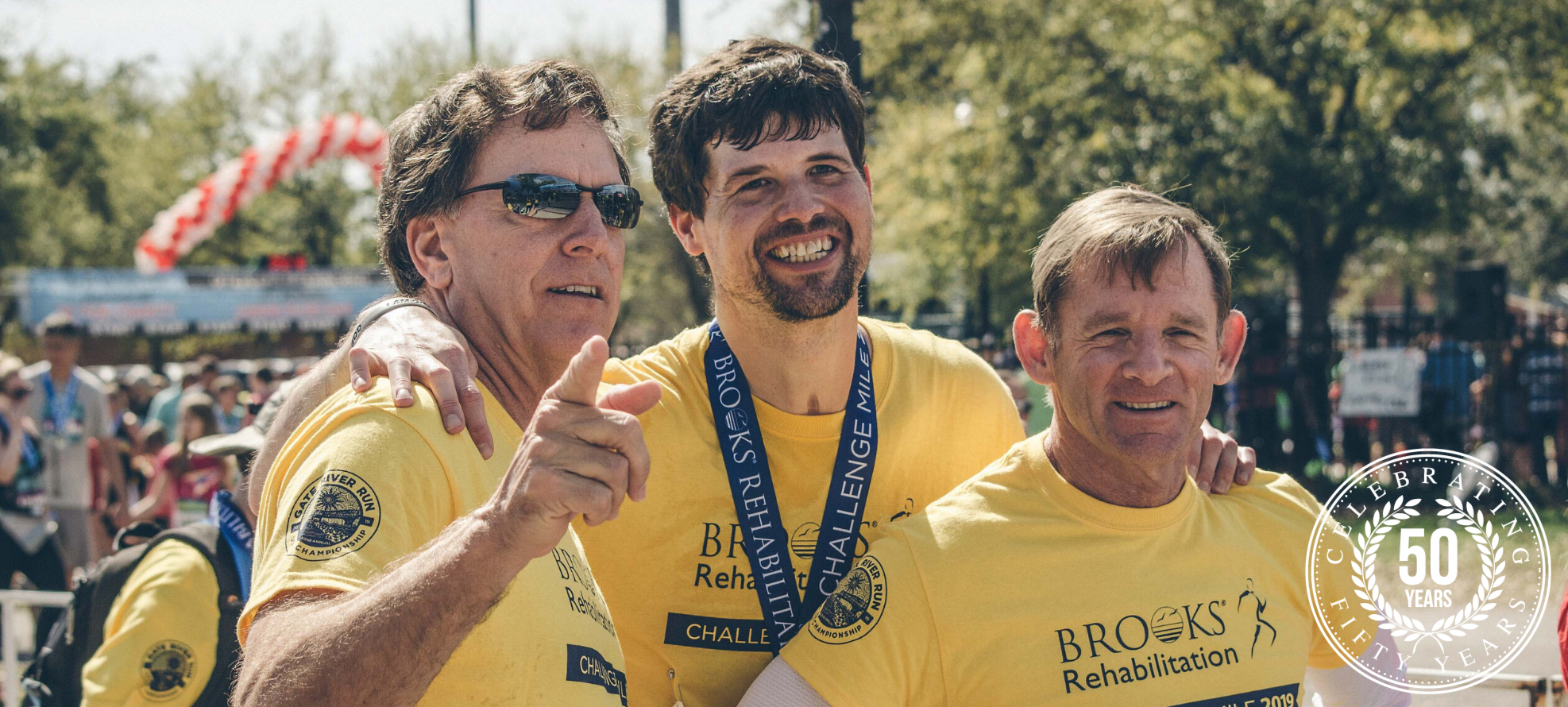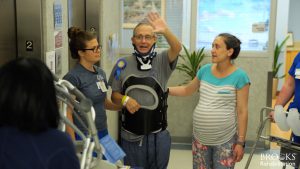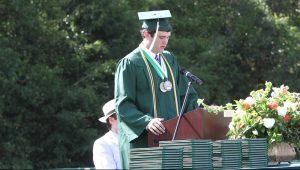Brain Injury Awareness Month: Michael Sellars

Back to physical health resource hub
Brooks Rehabilitation is celebrating 50 years of caring in 2020. Throughout the year, we’ll be sharing 50 Stories for 50 Years. These will include our history, patient stories, employee highlights and recaps of the many ways we’ve grown through the years to better serve our communities. Through five decades of rehabilitation, we have been privileged to assist millions of people achieve their highest level of recovery and participation in life.
This article was originally published in our Fall 2018 Issue of Brooks Rehabilitation Beyond Magazine. Subscribe online.
While driving to work, Michael Sellars’ car slid sideways into a concrete utility pole. He was taken to UF Health-Jacksonville, where his family learned he had a severe traumatic brain injury (tearing and hemorrhaging of the brain and brain stem), a ruptured spleen and a broken pelvis and left collarbone. He spent most of his hospitalization in a “persistent vegetative state,” a neurological state from which only 5 to 10 percent of patients emerge.
After 44 days, Michael showed signs that he could emerge. Dr. Kerry Maher, Brooks’ vice president of physical medicine & rehabilitation (PM&R) consulting and physician relations, advocated for his transfer to Brooks Rehabilitation Hospital. “Upon admission, Michael was deemed appropriate for our Disorders of Consciousness (DOC) program in conjunction with traditional inpatient rehabilitation. At the time he had a profoundly impaired level of consciousness (Rancho III) with significant cognitive and motor deficits,” said Sarala Srinivasa, MD, Brooks staff physiatrist. (The Rancho Scale is used to assess head-injury patients based upon cognitive and behavioral factors.)
The DOC program is intended for traumatic brain injury (TBI) patients functioning at a Rancho IV (confused-agitated) or lower. It consists of a daily sensory protocol that documents responses to stimuli. Data is collected and statistically analyzed weekly. “After three weeks, Michael successfully emerged from minimally conscious state into a post-amnesia state as he continued with intense physical, occupational, speech and cognitive therapies,” said Srinivasa.
During his 32-day stay at Brooks, Michael made phenomenal gains. Although seemingly small feats, he began to recognize his family members, follow directions, improve control of his body and take a few steps when well supported. He still had a long journey ahead.
Michael continued his recovery at a nursing center and in-home health care. He progressed to Brooks’ outpatient therapy and the Neurological Day Treatment program for four more months of intense therapies. Through the system of care that Brooks offers and constant support from his family, Michael made significant progress.
Upon graduating from traditional therapies, Michael became a member of the Brooks Clubhouse, a community-based day program where brain injury survivors and professional staff work side by side in the daily operations. Members focus on improving functional abilities, developing work skills and enhancing individual strengths and talents. Michael works in the Clubhouse’s business office work unit, performing data entry tasks and participating in the preparation of the weekly Clubhouse newsletter. Michael particularly enjoys aquatic therapy, working with the Brooks therapy dogs and helping to train future service dogs.
Michael’s ultimate goal was to walk without any type of assistive device and live independently. He continued working with Kat Cunningham, PT, DPT, NCS, at the Brooks Neuro Recovery Center (NRC). Members participate in an independent but supervised gym-style program that offers state-of-the-art technology and specialty-trained staff members to help further their neurological recovery.
“I met Michael on his first day of inpatient rehabilitation. I cared for him during his time at the skilled nursing center and in outpatient therapy. I was delighted to work with him again in the NRC because I’ve had the unique perspective of seeing him throughout his recovery. Michael and his family were continuing on a long uphill journey, but with their dedication and commitment, he had already overcome significant odds,” said Cunningham. “Over the course of two years, he progressed from walking with assistance and with a walker to walking independently with no assistive device at all. I truly believe that had Michael not been in our care, he would merely be surviving in another facility.”
“Michael has always been an extremely self-motivated person. Put a goal in front of him and get out of his way,” said Joe Sellars, Michael’s father. He was most excited to get back to some of the things he enjoyed most before the accident, like talking about cars, working out at a local gym and attending Jacksonville Jaguars games. He enjoys participating in the many activities offered through Brooks Adaptive Sports and Recreation. Seven years after the accident, Michael passed his driving evaluation with our certified specialist and was able to get his learner’s permit. He is looking forward to getting his license renewed in 2019.
“Michael and his family have taken advantage of every educational, therapeutic, recreational, community, research and cognitive program Brooks has to offer. They have been so supportive of other patients and their families, that they will probably never know how many lives they have truly touched for the better,” said Cunningham.
“Michael is the embodiment of why I work at Brooks,” said Srinivasa.


